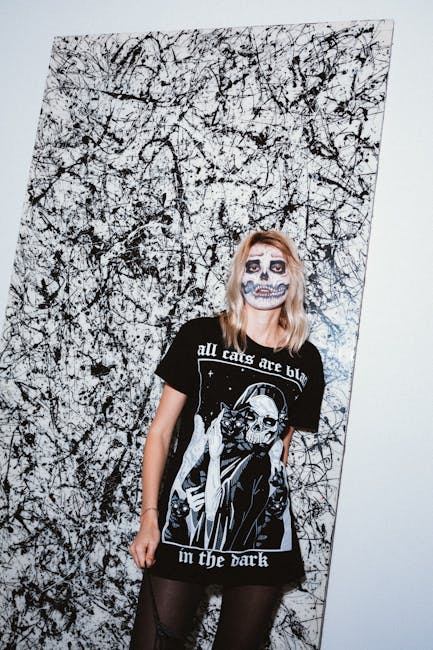Advanced TikTok Ads Optimization Tactics
Optimizing TikTok ad campaigns transcends mere bid adjustments and basic creative swaps. True advanced optimization leverages a deep understanding of the platform’s unique algorithmic dynamics, user behavior, and an integrated data-driven approach. This involves mastering granular control over campaign variables, employing sophisticated testing methodologies, and developing a nuanced perspective on ad fatigue and audience saturation. Moving beyond the foundational setup, advanced advertisers focus on maximizing return on ad spend (ROAS) and lifetime value (LTV) through continuous, iterative refinement across all stages of the marketing funnel.
I. Granular Creative Optimization and Advanced Iteration
TikTok’s content-first nature means creative is paramount. Advanced optimization moves beyond simply producing good videos to establishing a systematic, data-informed process for continuous creative iteration and diversification. This involves dissecting successful ad elements, understanding viewer retention curves, and strategically combating creative fatigue.
A. Deconstructing Viral Hooks and Pattern Interrupts
The first 3-5 seconds of a TikTok ad are critical. Advanced advertisers analyze top-performing creatives not just for overall engagement but specifically for the precise moment of a pattern interrupt or a compelling hook. This involves:
- Scene-Level Analysis: Using video editing software or specialized ad spy tools to break down winning ads scene by scene. Identify the exact frame where attention is captured, whether it’s an unexpected visual, a bold claim, a relatable problem statement, or a curiosity-inducing question.
- Sound Design Dissection: Beyond trending audio, analyze how sound effects, voiceovers, and background music are used to build tension, create urgency, or provide comedic relief. Sometimes, a unique sound cue is the primary pattern interrupt.
- Dynamic Text and Graphic Overlays: Examine how on-screen text, emojis, and graphics are strategically animated and timed to reinforce key messages or add visual intrigue without overwhelming the viewer. Advanced use might involve text that “writes itself” or highlights specific keywords.
- Problem/Solution Hooks: Deep-dive into how top ads present a core problem relevant to the target audience within the first few seconds, followed immediately by the product as the solution. Identify the most effective ways to articulate pain points authentically.
- User-Generated Content (UGC) Hook Types: Categorize and test different UGC-style hooks:
- Direct Address: “Hey, are you struggling with X?”
- Personal Story: “I used to have X problem until…”
- Before/After Reveal: Visually demonstrate a transformation immediately.
- Controversial Statement/Myth Busting: “You’ve been taught wrong about X.”
- Question-Based: “What if I told you there’s a better way to Y?”
B. Advanced A/B/n Testing Methodologies for Creative Elements
Traditional A/B testing is foundational, but advanced optimization employs multivariate or sequential A/B/n testing to isolate the impact of specific creative variables.
- Component-Level Isolation: Instead of testing entirely new ads, isolate and test individual components:
- Hook Variations: Keep the middle and end of the ad constant, test 3-5 different opening hooks.
- Call-to-Action (CTA) Endings: Vary the phrasing, visual elements, or urgency of the final CTA, keeping the preceding content consistent.
- Soundtrack Variations: Test different trending sounds or custom audio tracks with the same visual creative.
- Text Overlay Styles: Compare different fonts, colors, animation styles, or placement of on-screen text.
- Pacing Differences: Create slightly different cuts of the same ad with varied pacing (faster cuts, slower reveals) to see what resonates.
- Sequential Testing Frameworks: Implement a structured testing roadmap where winning elements from one round are incorporated into the next iteration. For example, Round 1 tests Hooks A, B, C. If Hook B wins, Round 2 tests CTAs X, Y, Z with Hook B. This systematic approach rapidly refines creative.
- Statistical Significance and Sample Size: Ensure tests run long enough and gather sufficient impressions and conversions to achieve statistical significance. Avoid making decisions on preliminary data. Utilize TikTok’s built-in A/B testing features or external statistical tools for robust analysis.
- Ad Fatigue Monitoring and Proactive Refresh:
- Frequency Cap Analysis: Monitor ad frequency not just at the campaign level, but at the ad set and individual ad level. High frequency (e.g., >3-4 impressions per user per week) often indicates fatigue.
- Declining CTR/Conversion Rate with Stable CPM: This is a strong indicator of creative fatigue. If your cost per mille (CPM) remains consistent but your click-through rate (CTR) and conversion rate drop, users are seeing the ad too often and ignoring it.
- Comment Section Sentiment: Monitor comments for repetitive negative feedback or mentions of seeing the ad too often.
- Creative Refresh Cadence: Establish a proactive schedule for refreshing creatives (e.g., weekly, bi-weekly) even if performance hasn’t tanked, especially for broad audiences.
- Vertical Creative Diversification: Instead of just producing more of the same, create diverse ad types (e.g., product demo, testimonial, lifestyle, unboxing, problem/solution) to appeal to different aspects of the audience or prevent visual monotony.
C. Leveraging Interactive Ad Formats and Spark Ads
Beyond standard In-Feed Ads, TikTok offers features that can significantly boost engagement and authenticity.
- Interactive Add-ons: Experiment with features like Polls, Display Cards, and Pop-out windows.
- Polls: Ask questions related to pain points or preferences before revealing the product. This boosts engagement and can segment audiences mentally. “Do you struggle with X? (Yes/No)”
- Display Cards: Use these for concise value propositions, discount codes, or shipping offers that pop up during the ad, drawing attention to key details.
- Gift Codes/Stickers: Gamify the ad experience with interactive elements that can lead to offers.
- Optimization: Track interaction rates with these elements. A high interaction rate often correlates with higher view completion rates and better conversion. Test different placements and timings of these elements within the ad.
- Spark Ads Integration for Authenticity and Reach:
- Definition: Spark Ads allow advertisers to boost existing organic content (from their own account or other creators with permission) as In-Feed Ads. This leverages authentic social proof and potentially higher engagement.
- Optimization Strategy:
- Identify Organic Winners: Monitor your own or influencer organic content for videos that achieve exceptionally high views, shares, and comments. These are prime candidates for Spark Ads.
- Creator Collaboration: Partner with creators and negotiate the rights to use their organic videos as Spark Ads. This taps into their built-in credibility.
- Test Organic vs. Paid Creative: Run A/B tests comparing a standard ad creative against the same content run as a Spark Ad. Spark Ads often see lower CPMs and higher CTRs due to their native feel.
- Profile Visit Optimization: Spark Ads drive traffic directly to the creator’s profile, which can lead to additional organic engagement and followers. Optimize the profile itself for conversion or further content consumption.
- Leverage Comments and Shares: Spark Ads carry over comments and shares from the original organic post, adding a powerful layer of social proof that traditional ads lack. Monitor and respond to these comments.
II. Advanced Audience Targeting and Segmentation
Sophisticated audience targeting on TikTok goes far beyond basic demographics or interests. It involves layering audience types, dynamic exclusion, and leveraging behavioral signals for hyper-segmentation.
A. Hyper-Segmented Custom Audiences and Lookalikes
While basic custom audiences and Lookalikes are standard, advanced strategies refine these for superior performance.
- Event-Specific Custom Audiences: Instead of just “website visitors,” create custom audiences based on specific conversion events or actions deeper in the funnel:
- Add-to-Cart (ATC) but No Purchase: Retarget these users with urgency, scarcity, or special offers.
- Initiate Checkout (IC) but No Purchase: These are high-intent users; target them with final nudges, free shipping, or trust signals.
- Specific Product Page Views (e.g., >30 seconds): Create audiences for users who showed deep interest in particular product categories.
- Subscription Opt-ins (for lead gen): Target users who signed up for a newsletter but haven’t converted to a sale.
- Video Viewers (specific percentage or duration): Target users who watched 75% or 100% of a specific ad or organic video, indicating high engagement.
- Value-Based Lookalike Audiences (LLAs):
- Purchase LTV (Lifetime Value) LLAs: Upload customer lists segmented by LTV. Create LLAs from your highest-value customers. This trains the algorithm to find users most likely to generate significant revenue, not just convert.
- Repeat Purchaser LLAs: Generate an LLA from customers who have made multiple purchases. This is invaluable for subscription models or products with high repurchase rates.
- Micro-Conversion LLAs: If full purchases are scarce, create LLAs from valuable micro-conversions like “add to wishlist,” “email sign-up,” or “specific content download.”
- Layered Lookalikes and Interest-Based Segmentation:
- LLAs + Interest Targeting: Overlay an LLA (e.g., 1% Purchasers) with specific interest categories relevant to your product (e.g., “Online Shopping,” “Beauty Products,” “Fitness”). This narrows the LLA to highly relevant segments.
- Exclude Purchased Customers: Always exclude recent purchasers (e.g., last 30-90 days) from cold audience campaigns to prevent wasted spend and maintain positive brand perception.
- Exclude Engaged Non-Converters: Exclude users who have already engaged heavily with your brand but haven’t converted from certain retargeting campaigns, focusing on new users or different offers for them.
B. Leveraging In-App Behavior Signals and Custom Audiences 2.0
TikTok’s tracking capabilities are evolving. Advanced users leverage new signals beyond standard pixel events.
- TikTok Events Manager Customization:
- Parameter Tracking: Beyond standard events, implement custom parameters (e.g.,
value,currency,content_id,content_type,num_items) for all events. This provides richer data for optimization and audience creation. - Custom Events: Define and track unique events relevant to your business (e.g., “watched demo video,” “completed quiz,” “added to waitlist”). Use these for precise retargeting and Lookalike generation.
- Parameter Tracking: Beyond standard events, implement custom parameters (e.g.,
- In-App Behavioral Audiences: TikTok allows targeting based on specific in-app behaviors (e.g., interacting with certain hashtags, watching specific types of videos, following certain creators). While often broad, these can be layered:
- Combined with LLA: Use behavioral signals to filter a broad LLA (e.g., 5% LLA from website visitors) to only include those who also engage with content related to “sustainable living” or “tech gadgets.”
- Exclusion for Contextual Relevance: Exclude users who frequently engage with competitor content, or content entirely unrelated to your niche, to refine targeting.
- Retargeting Funnel Architectures:
- Multi-Stage Retargeting: Design a sequential retargeting strategy.
- Stage 1 (Warm Audience): Website visitors (all pages) -> Generic value proposition, brand awareness.
- Stage 2 (Hot Audience): ATC/IC -> Urgency, scarcity, specific product benefits, social proof.
- Stage 3 (High Intent): Specific product page viewers with multiple visits -> Exclusive discount, free shipping, testimonials, live chat offer.
- Dynamic Creative Retargeting (DCR): For e-commerce, utilize TikTok’s DCR to automatically show users ads for products they previously viewed, added to cart, or similar items. Optimize DCR campaigns by ensuring your product catalog is perfectly synced and up-to-date.
- Negative Retargeting: Exclude converted customers from all retargeting campaigns immediately. Also, consider excluding low-intent users who visited briefly but showed no engagement, saving budget for higher-intent segments.
- Multi-Stage Retargeting: Design a sequential retargeting strategy.
III. Mastering Bidding Strategies and Budget Allocation
Advanced advertisers understand that bidding and budgeting are not static decisions but dynamic levers that must be constantly adjusted based on performance, competition, and learning phase progression.
A. Nuanced Bid Strategy Application (Cost Cap, Value Optimization, Target Cost)
Moving beyond ‘Lowest Cost’ (which TikTok generally defaults to), advanced strategies leverage specific bid types for specific goals.
- Cost Cap for Predictable CPA/ROAS:
- Purpose: To achieve a specific Cost Per Acquisition (CPA) or Return on Ad Spend (ROAS) target while maintaining some scale.
- Optimization:
- Start Higher, Then Lower: Begin with a Cost Cap slightly above your desired CPA to allow the algorithm to explore. Gradually lower it by 5-10% increments every 24-48 hours if performance allows.
- Monitor Delivery: If delivery drops significantly, your Cost Cap is too restrictive. Increase it slightly or pause/duplicate the ad set with a higher cap.
- Learning Phase Exit: Ensure Cost Cap ad sets get enough conversions (typically 50 per week) to exit the learning phase and stabilize.
- Budgeting: Use sufficient budget with Cost Cap. Too low a budget combined with a tight cap can prevent delivery.
- Value Optimization (VO) for LTV Maximization:
- Purpose: To optimize for conversions that also have a high purchase value, ideal for businesses with varying product price points or average order values (AOV). Requires purchase value data to be passed back to TikTok via the pixel.
- Optimization:
- Pixel Integrity: Ensure your pixel accurately reports purchase values. This is critical for VO to function.
- Target ROAS: Set a Target ROAS for the algorithm to aim for. Start with a realistic ROAS target based on historical data.
- Minimum Conversions: VO needs even more conversion data than Cost Cap to learn effectively. Ensure campaigns have enough conversions per week (e.g., 50-100+) for stable optimization.
- High-Value Product Focus: Use VO for campaigns promoting high-margin or high-AOV products.
- Target Cost for Stable CPA (Specific Scenarios):
- Purpose: To maintain a very stable CPA without significant fluctuations. Less aggressive than Cost Cap for scale, but more predictable.
- Optimization:
- Established Performance: Use Target Cost once you have a clear, stable CPA benchmark.
- Minimal Volatility: Ideal for campaigns where budget stability and consistent CPA are prioritized over aggressive scaling or maximizing value.
- Monitoring: While stable, still monitor for slight drifts in CPA, indicating potential audience fatigue or increased competition.
B. Advanced Budget Allocation and Scaling Strategies
How you allocate budget across campaigns and ad sets significantly impacts scaling efficiency.
- Strategic CBO (Campaign Budget Optimization) vs. ABO (Ad Set Budget Optimization):
- CBO for Broad Scaling: Use CBO when you have multiple proven ad sets (audiences + creatives) within a campaign and trust TikTok to dynamically allocate budget to the best performers.
- Optimization: Ensure ad sets within a CBO have similar CPA potential. If one ad set has a significantly higher CPA target, it might consume too much budget at the expense of others. Set minimum/maximum daily spends at the ad set level within a CBO if specific control is needed.
- ABO for Testing and Control: Use ABO when initially testing new audiences or creatives. This allows you to guarantee spend on each ad set, preventing the algorithm from prematurely cutting off promising, but slower-starting, ad sets.
- Optimization: Once an ABO ad set demonstrates consistent performance, consider duplicating it into a CBO campaign for scaling.
- CBO for Broad Scaling: Use CBO when you have multiple proven ad sets (audiences + creatives) within a campaign and trust TikTok to dynamically allocate budget to the best performers.
- Horizontal vs. Vertical Scaling:
- Horizontal Scaling: Duplicating winning ad sets or campaigns with slightly adjusted parameters (e.g., new LLA percentage, new interest group, new creative variations). This expands reach without significantly increasing individual ad set budgets.
- Optimization: Test new audiences with proven creative, or new creative with proven audiences. Avoid changing too many variables at once.
- Vertical Scaling: Increasing the budget on existing winning ad sets or campaigns.
- Optimization: Increase budget by 10-20% increments every 24-48 hours. Monitor performance closely. Steep increases can push the ad set back into the learning phase or cause CPA spikes.
- Threshold Awareness: Be aware of the point where vertical scaling becomes inefficient (CPA rises sharply, ROAS drops). This indicates audience saturation or the need for new creative.
- Horizontal Scaling: Duplicating winning ad sets or campaigns with slightly adjusted parameters (e.g., new LLA percentage, new interest group, new creative variations). This expands reach without significantly increasing individual ad set budgets.
- Dynamic Budget Allocation Based on Time/Day:
- Automated Rules: Implement automated rules to adjust budgets based on performance metrics throughout the day or week.
- High Performance Boost: If ROAS > X and CPA < Y during prime hours (e.g., 6 PM – 11 PM), increase budget by Z%.
- Low Performance Decrease: If ROAS < X and CPA > Y during off-peak hours (e.g., 2 AM – 6 AM), decrease budget by Z% or pause.
- Weekend Scaling: Increase budgets on weekends if historical data shows higher conversion rates or lower CPAs.
- Geo-Specific Budgeting: If targeting multiple regions, allocate budget proportionally to regions showing the highest ROAS, or where competition is lower at specific times.
- Automated Rules: Implement automated rules to adjust budgets based on performance metrics throughout the day or week.
IV. Advanced Data Analysis and Attribution Modeling
Beyond standard reporting, advanced TikTok advertisers delve into the nuances of data interpretation, attribution, and integration to paint a complete picture of campaign efficacy.
A. Beyond ROAS: LTV, Cohort Analysis, and Incrementality
Single-purchase ROAS is a good start, but long-term profitability requires deeper metrics.
- Lifetime Value (LTV) Integration:
- Data Flow: Connect your CRM or customer database with your ad platform data. Track not just the initial purchase value but subsequent purchases from customers acquired via TikTok.
- LTV-Based Bidding: Use LTV data to inform your Cost Cap or Value Optimization targets. A higher initial CPA might be acceptable if the LTV of those customers is significantly higher.
- Audience Segmentation by LTV: Create Lookalike Audiences from your highest LTV customer segments to find more valuable users.
- Cohort Analysis for Retention and Repeat Purchases:
- Definition: Group customers by their acquisition date (e.g., “August 2023 Acquired Cohort”). Track their behavior (repurchase rate, average spend) over time.
- Optimization Insights: If a specific cohort (e.g., from a particular ad campaign or creative type) shows significantly higher retention or LTV, double down on those acquisition strategies. Identify patterns in customer drop-off points to inform retention marketing.
- Incrementality Testing:
- Definition: Measures the true additional sales or conversions generated by your ads, beyond what would have happened organically or through other channels. This counters the risk of over-attributing sales to paid channels.
- Methodologies:
- Geo-Lift Studies: Run ads in specific geographic regions (test group) and compare sales performance against similar regions where ads are not running (control group). This requires precise segmentation and sufficient population.
- Holdout Groups: For very large advertisers, create a small audience segment that is intentionally excluded from all TikTok ads. Compare the behavior of this group to the exposed group.
- Paused Campaign Analysis: Temporarily pause campaigns and observe changes in organic sales or sales from other channels to estimate their true incremental contribution.
- Decision Making: Incrementality data helps justify higher ad spend and provides a more accurate picture of true ROI.
B. Advanced Pixel Event Tracking and Custom Parameters
The TikTok pixel is your eyes and ears. Maximizing its potential is crucial.
- Comprehensive Event Mapping: Ensure every significant user action on your website or app is tracked as a standard or custom event (e.g., “Add To Wishlist,” “Search,” “Lead Submitted,” “Subscription Started”).
- Dynamic Value and Parameter Passing:
- Purchase Value: Always pass the dynamic purchase value. This is non-negotiable for ROAS optimization and Value Optimization bidding.
- Content IDs/Types: Pass
content_idandcontent_typefor product views, add-to-carts, and purchases. This enables Dynamic Showcase Ads and helps in detailed product-level analysis. - User Information (Anonymized): Pass anonymized user data (e.g.,
user_tier,subscription_status) if relevant, to create more nuanced custom audiences or track the impact of ads on different user segments.
- Server-Side API (Conversions API) Implementation:
- Purpose: Send conversion events directly from your server to TikTok, bypassing browser limitations (like ad blockers, cookie restrictions, iOS 14.5+ privacy changes). This significantly improves data accuracy and reduces data loss.
- Optimization:
- Deduplication: Implement proper deduplication logic between pixel events and server-side events to avoid double counting.
- Enhanced Match Rate: Send as many customer information parameters (e.g., email, phone number, external_id) as securely possible with server-side events to improve the match rate and audience accuracy.
- Event Prioritization: If there’s a conflict, define a clear hierarchy for event processing (e.g., server-side events take precedence).
- Benefits: More accurate reporting, better optimization signals for the algorithm, and more robust audience building.
C. Cross-Channel Attribution and Unified Reporting
TikTok ads don’t exist in a vacuum. Understanding their role in the broader marketing ecosystem is key.
- Multi-Touch Attribution Models:
- Beyond Last-Click: While TikTok’s default attribution is often last-click, sophisticated advertisers use multi-touch models (linear, time decay, position-based) in their analytics platforms (e.g., Google Analytics 4, Mixpanel, custom BI dashboards).
- TikTok’s Contribution: Understand TikTok’s role as an introducer (first touch), a mid-funnel engager, or a closer (last touch). It often excels in discovery.
- Unified Data Dashboards:
- Consolidate Data: Integrate TikTok ad data with data from other ad platforms, organic social, email, CRM, and website analytics into a single dashboard.
- Visualization: Create custom visualizations that show trends, segment performance, and funnel conversion rates across all channels.
- Actionable Insights: Use these dashboards to identify synergies between channels, reallocate budget effectively, and spot opportunities for cross-promotion or remarketing. For example, if TikTok drives significant top-of-funnel awareness, but Google Search Ads close the sale, credit both appropriately.
V. Automated Rules and Predictive Analytics for Scaling
Automation is no longer a luxury but a necessity for managing complex, high-spending campaigns. Predictive analytics takes this a step further by anticipating trends.
A. Advanced Automated Rules for Dynamic Management
TikTok’s automated rules can manage budgets, bids, and ad set statuses dynamically.
- Performance-Based Budget Adjustments:
- Scaling Up Winners: If an ad set’s ROAS > X and impressions > Y for the past 3 days, increase its daily budget by 15% (up to a max).
- Pausing Underperformers: If an ad set’s CPA > Z and spend > W over the past 2 days, pause it or decrease its budget by 50%.
- Creative Refresh Triggers: If an ad’s CTR drops by >20% week-over-week while frequency is high, send an alert to replace creative.
- Bid Adjustments Based on CPA/ROAS Targets:
- Aggressive Cost Cap/Target Cost Management: If actual CPA is consistently below Target Cost, slightly lower the bid to optimize for efficiency. If above, slightly raise the bid to ensure delivery.
- Ad Set Management for Learning Phase:
- Budgeting for Learning: Set rules to ensure new ad sets receive minimum spend to exit the learning phase (e.g., if daily spend < $X for 3 days and no conversions, increase budget or review creative).
- Pausing Stalled Ad Sets: If an ad set receives zero conversions after spending 3x CPA target, pause it.
- Notification and Alert Systems:
- Anomaly Detection: Create rules to alert you (email, push notification) if key metrics (e.g., CPM, CTR, CPA) deviate significantly from historical averages.
- Budget Depletion Warning: Notify when campaign budget is nearing depletion to prevent ads from stopping prematurely.
B. Leveraging Predictive Analytics for Proactive Optimization
Moving from reactive to proactive, predictive analytics uses historical data and machine learning to forecast future performance.
- Forecasting Campaign Performance:
- Data Models: Use statistical models (e.g., time series analysis, regression) or specialized AI tools to predict future CPA, ROAS, and impression volume based on current trends, seasonality, and budget adjustments.
- Scenario Planning: Model the impact of different budget increases or bid changes on future performance.
- Anticipating Ad Fatigue:
- Predictive Fatigue Score: Develop internal models that assign a “fatigue score” to creatives based on historical patterns of declining CTR/conversion rates at specific frequency levels.
- Proactive Creative Production: Based on fatigue predictions, plan and produce new creative assets before performance tanks.
- Identifying High-Potential Audiences:
- Lookalike Audience Evolution: Predict which Lookalike audiences are most likely to convert based on their current engagement metrics and overlap with existing high-performing segments.
- Churn Prediction: For subscription businesses, predict which customers acquired via TikTok are at high risk of churning, allowing for proactive retention efforts.
- Budget Optimization with Predictive ROAS:
- Dynamic Budget Shifting: Instead of just reacting to past ROAS, use predicted ROAS to automatically shift budget towards campaigns and ad sets expected to perform best in the next 24-48 hours.
- Inventory Forecasting (E-commerce): For e-commerce, integrate ad spend predictions with inventory levels to avoid over-promoting out-of-stock items or under-promoting high-stock, high-margin products.
VI. Emerging Trends and Advanced Strategic Considerations
The TikTok ads landscape is constantly evolving. Staying ahead requires understanding new features and adapting to shifts in user behavior and privacy regulations.
A. TikTok Shop Ads and E-commerce Integration
TikTok’s push into native e-commerce offers significant new optimization opportunities.
- TikTok Shop Ad Formats:
- Product Shopping Ads: Optimize these by ensuring product feeds are meticulously managed, product images and descriptions are compelling, and pricing is competitive.
- LIVE Shopping Ads: Promote live streams directly from your TikTok Shop. Optimization involves promoting engaging hosts, high-quality production, exclusive live-only offers, and robust moderation of comments.
- Video Shopping Ads: Integrate shoppable product links directly within your In-Feed video ads, streamlining the path to purchase.
- Shop Page Optimization: Your TikTok Shop page itself needs optimization:
- Curated Product Collections: Group products logically.
- Strong Reviews and Ratings: Encourage customer reviews directly within the shop.
- Interactive Elements: Utilize shop polls, Q&As, and community features to build engagement.
- Attribution within TikTok Shop: Leverage TikTok’s integrated analytics for Shop sales, understanding the full funnel from ad impression to in-app purchase. This offers cleaner attribution than off-platform purchases.
- Influencer & Affiliate Marketing Integration:
- Creator Partnerships: Collaborate with creators who have established TikTok Shops or are active in TikTok’s affiliate program. Their authenticity drives sales within the platform.
- Commission Structures: Optimize affiliate programs by offering competitive commissions and providing creators with high-converting assets.
B. Adapting to Privacy Changes and Data Minimization
The advertising landscape is moving towards a privacy-first world.
- First-Party Data Reliance: Reduce dependence on third-party cookies by focusing on collecting and activating your own first-party data (email lists, customer databases, direct website interactions).
- Pixel Enhancement: Ensure your TikTok pixel is configured for Enhanced Match to send as much anonymized first-party data as possible (e.g., hashed email addresses, phone numbers) for better audience matching.
- Conversions API (CAPI): Prioritize CAPI implementation as it offers superior data resilience against browser and device privacy limitations.
- Consent Management Platforms (CMPs): Implement robust CMPs on your website to ensure compliance with privacy regulations (GDPR, CCPA). Integrate your pixel and CAPI with your CMP to respect user consent.
- Aggregated Event Measurement: Understand how TikTok processes aggregated event data when full user-level data is limited. Optimize by prioritizing your most critical conversion events.
- Contextual Targeting Resurgence: As user data becomes more restricted, contextual targeting (placing ads alongside relevant content) might gain importance. While TikTok’s primary strength is algorithmic, keep an eye on how it evolves its contextual capabilities.
C. Staying Ahead of Algorithmic Shifts and Trendjacking
The TikTok algorithm is dynamic. Advanced advertisers constantly observe its behavior.
- Continuous Algorithmic Observation:
- Monitor “For You Page” (FYP) Trends: Actively consume content on the FYP to understand current aesthetics, audio trends, pacing, and storytelling styles favored by the algorithm.
- Ad Library Analysis: Regularly check the TikTok Ad Library for successful campaigns in your niche and broader trends. Analyze commonalities in creative, hooks, and calls to action.
- TikTok Creator Hub/Business Center Insights: Leverage any insights or trend reports TikTok provides directly to advertisers.
- Strategic Trendjacking:
- Authenticity Over Opportunism: When jumping on a trend, ensure it genuinely aligns with your brand message and product. Forced trendjacking can backfire.
- Rapid Production: The window for trends is short. Develop agile creative teams capable of producing high-quality, on-trend content rapidly.
- Test and Iterate: Don’t assume a trend will work for your brand. Run small-scale tests first and iterate quickly based on early performance.
- Community Engagement as an Optimization Lever:
- Comment Section Management: Actively monitor and respond to comments on your ads. Positive engagement can boost organic reach and improve ad performance signals. Address negative comments gracefully.
- Spark Ad Comment Leverage: If using Spark Ads, the comments from the original organic post provide invaluable social proof. Encourage users to leave comments and engage with existing ones.
- TikTok Creator Marketplace Insights: Use the marketplace to identify emerging creators and trends before they go mainstream, giving you an edge in creative development and partnership opportunities.
VII. Advanced Account Structure and Portfolio Management
For agencies or large advertisers managing multiple products/brands, optimizing account structure and adopting a portfolio approach is crucial.
A. Multi-Account Strategy and Redundancy:
Managing multiple TikTok ad accounts can offer strategic advantages.
- Risk Diversification: Spread your campaigns across multiple accounts to mitigate risks associated with account flags, policy violations, or technical glitches impacting a single account.
- Testing Environments: Designate specific accounts for aggressive testing of new creative concepts, audiences, or bidding strategies, keeping core revenue-generating campaigns separate in stable accounts.
- Budget Segregation: For agencies, separate client budgets into distinct accounts to simplify billing, reporting, and avoid cross-contamination of data or spend.
- IP Warming: For brand new accounts, start with small budgets and broad targeting to “warm up” the account, gradually increasing spend and narrowing targeting as the account builds trust with TikTok’s system.
- Policy Compliance Segmentation: If you have products or services that fall into grey areas of ad policy, consider isolating them in specific accounts to prevent policy issues from affecting your main, compliant campaigns.
B. Campaign Naming Conventions and Tagging:
A robust naming convention is critical for data analysis and organization.
- Granular Naming Schema: Implement a consistent naming convention across all campaigns, ad sets, and ads that immediately conveys key information without needing to drill down. Examples:
CAMPAIGN: [Objective]_[Audience Type]_[Funnel Stage]_[Geo]_[Date]- Example:
CONV_LLA1%Purch_TOFU_US_20231015
- Example:
AD SET: [Audience Name]_[Creative Theme]_[Bid Strategy]_[Budget]- Example:
LLA1%_UGC_CostCap25_D300
- Example:
AD: [Creative ID/Name]_[Hook Type]_[CTA Variation]- Example:
Video_123_ProblemSolution_ShopNow
- Example:
- Custom Tags/Labels: Utilize TikTok’s tagging feature (if available, or replicate using parts of the naming convention) to categorize campaigns by product line, marketing initiative, sales event, or seasonal promotion. This helps in filtering and aggregating data for specific analyses.
- A/B Testing Naming: Clearly label A/B test variations to easily track results (e.g.,
_A,_B,_V1,_V2).
C. Continuous Auditing and Performance Reviews:
Advanced optimization is an ongoing process, not a one-time setup.
- Weekly Deep Dives: Conduct weekly reviews of all active campaigns, focusing on:
- Creative Performance: Identify top/bottom performing ads, creative fatigue signals, and opportunities for new creative.
- Audience Saturation: Monitor frequency and look for declining CTRs within specific ad sets.
- Bid/Budget Efficiency: Are you getting the best CPA/ROAS for your spend? Are budgets being spent effectively?
- Learning Phase Status: Ensure ad sets are exiting the learning phase and maintaining stable performance.
- Monthly Strategic Reviews: Step back and review performance at a higher level:
- Overall ROAS/LTV Trends: Compare month-over-month performance against targets.
- Channel Mix Optimization: How is TikTok performing relative to other channels? Should budget be reallocated?
- Market Trends: Are there shifts in consumer behavior or competitor activity that require strategy adjustments?
- New Feature Adoption: Are you leveraging the latest TikTok ad features?
- Experimentation Roadmap: Maintain a clear roadmap of planned experiments (new audiences, new creatives, new bid strategies) to ensure continuous improvement and prevent stagnation. Allocate dedicated budget for testing.
These advanced tactics, when implemented systematically and coupled with a data-driven mindset, empower advertisers to unlock TikTok’s full potential, driving scalable and profitable growth in an increasingly competitive landscape.











